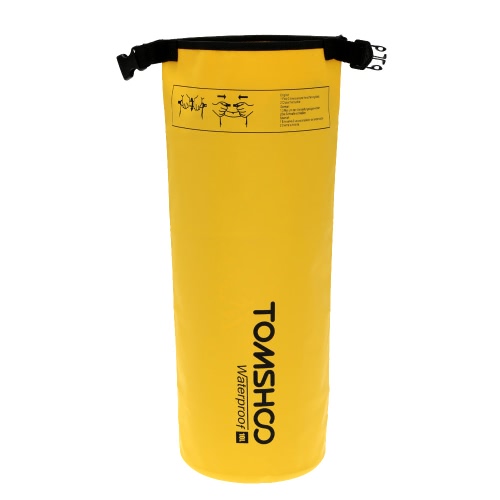Free
Support

Jazz Brunch is a sumptuous selection of hot and cold dishes available every day at The Court of Two Sisters in our French Quarter courtyard! Book your table at the enchanting Court of the Two Sisters restaurant and prepare to indulge in an authentic, high‐class Creole dining experience. Upon arrival, you will be seated in one of the elegant dining rooms or the verdant courtyard – the largest courtyard in New Orleans – where lush foliage and cast‐iron decor transport you to another era. A friendly and knowledgable server will walk you through the myriad creative dishes included in the cold and hot buffets. Experience some new flavors or stick to your old favorites. As you enjoy a complimentary glass of wine, champagne or cup of coffee, soak up the tunes of the Jazz Trio and learn a bit about history of 613 Rue Royale and the two Creole sisters – Emma and Bertha Camors – for which the restaurant is named. DAILY JAZZ BRUNCH BUFFET MENU Soup Du Jour Turtle Soup au Sherry Waiter Service or Egg Station Eggs and Omelets made to order, any style Our House Specialty – Seafood Orleans and Shrimp Creole Omelets Classic Eggs Benedict Seafood Station Unlimited Fresh Boiled Shrimp and Crawfish (when available) Accompanied by Remoulade and Cocktail Sauces Specialty Salads A unique selection of salads including: Zesty Cajun Pasta, Creamy Crawfish Pasta, Chicken Salad, Chicken Curry Salad and an assortment of domestic and imported cheeses Some of our Hot Entrée Offerings Fresh Shrimp in Spicy Etouffee, Duck à l’ orange, Crawfish Louise, Creole Jambalaya and a local favorite – Veal Grillades and Gravy with Corn Grits Breakfast items available – Bacon and Sausage From our Bakery Homemade Buttermilk Biscuits Desserts & Fresh Fruits A vast variety of fresh cakes, pies and sweets baked daily on premises including Mardi Gras King Cake, Southern Pecan Pie, Bananas Foster, Bread Pudding with Whiskey Sauce, Home Churned French Vanilla Ice Cream with your choice of Praline Sauce or Chocolate Sauce; plus an assortment of local and exotic fruit and fruit salads Beverages One complimentary glass of COTS Private Label Chardonnay, Cabernet Sauvignon, Champagne or Mimosa per person along with coffee, tea, and juice are included in price. The above list is only a sampling of the many different items served on the buffet. Some items are changed due to season availability.
From your starting point by Edinburgh Castle, you head out of the city to the charming village of Roslin, making your first stop at one of Scotland’s most extraordinary buildings - Rosslyn Chapel*. The Chapel’s worldwide fame increased thanks to Dan Brown’s bestselling novel ‘The Da Vinci Code’. Described as the “Library in Stone”, the inside walls of Rosslyn Chapel are adorned with thousands of ancient carvings, each with a story of its own. You can also learn of the myths and legends surrounding the chapel, including tales of the Knights Templar. Leaving Rosslyn you will continue into the heart of the Scottish Borders, an area rich in hills, valleys, rivers and moorland, as well as being the traditional home to Scottish rugby. Next travel to the historic town of Melrose, birthplace of the game of Rugby Sevens and location of Melrose Abbey, founded in 660 AD, and said to be the burial place of the casket containing the heart of Robert the Bruce. Here you stop for lunch and have free time to explore Melrose and its Abbey*. On your return journey, you will travel via the village of St. Boswells and pause for a photo stop at Scott’s View, where you can enjoy glorious scenic views overlooking the valley of the River Tweed, reputed to be one of the favourite beauty spots of the famous Scottish author, Sir Walter Scott. The journey north takes you to Pencaitland, where you will visit the charming Glenkinchie Distillery*, one of the few Lowland whisky distilleries in Scotland. Here you can enjoy “a tour and a taste”, learn more about “the water of life” and sample some of Glenkinchie’s finest malts. You will then return to Edinburgh. *OPTIONAL EXTRA. Mon, Thu & Sat | ALL YEAR Departs: 09:30 Returns: 17:15
Property Location With a stay at Alba Lodge in Glasgow (City Centre Glasgow), you'll be minutes from Centre for Contemporary Art and McLellan Galleries. This bed & breakfast is within close proximity of Glasgow School of Art and Kings Theatre Glasgow.Rooms Stay in one of 15 guestrooms featuring LCD televisions. Digital television is provided for your entertainment. Conveniences include desks, housekeeping is provided daily, and irons/ironing boards can be requested.Rec, Spa, Premium Amenities Make use of convenient amenities, which include complimentary wireless Internet access and tour/ticket assistance.Dining A complimentary full breakfast is included.Business, Other Amenities Featured amenities include express check-in, a 24-hour front desk, and luggage storage. Self parking (subject to charges) is available onsite.
Catégorie:Organisateur de voyage,Organisateur de Bagage,Sac de Voyage; Pour:Unisexe; Activité:Voyage; Quantité:6 jeux; Forme:Rectangle,Carré; Fonction Première:Vêtements,Soutiens-gorge; Matériau:Tissus non-tissés; Dimensions:1714/2624/3426/302012/302712/403012; Type de Fermeture:Fermeture; Fonction:Durable,Grande Capacité,Pliable,Ultra léger (UL),Rangement de Voyage,Résistant à la poussière,Etanche; Dureté:Flexible; Poids Net:0.25; Pays populaire:Irlande; Produits spéciaux sélectionnés:COD,chaud
Bouteille de compression portable en silicone, 70 ml
Highlights
Erkunden Sie Herculaneum, eine alte römische Stadt, die nach dem Ausbruch des Vesuvs im Jahr 79 n. Chr. Besser erhalten blieb als Pompeji
Spazieren Sie durch die gepflasterten Straßen und sehen Sie die antiken Villen, Fresken, Badehäuser und vieles mehr
Abholung vom / zum Hotel vom Zentrum von Neapel - Hin- und Rückfahrt zwischen Neapel und Herculaneum an Bord eines voll ausgestatteten GT-Reisebusses mit Audiokommentar an Bord
Dieses Ticket beinhaltet
Dienstleistungen eines sachkundigen Reiseführers an Board
Abholung vom Hotel mit einem modernen Reisebus
Hin- und Rückfahrt zwischen Neapel und Herculaneum
Dieses Ticket beinhaltet nicht
Eintritt Herculaneum
